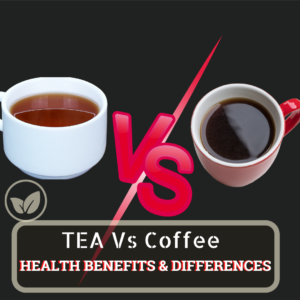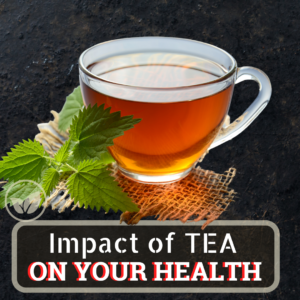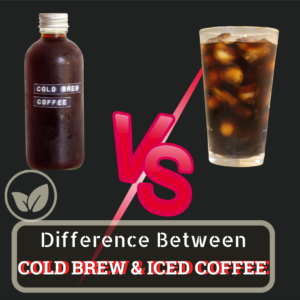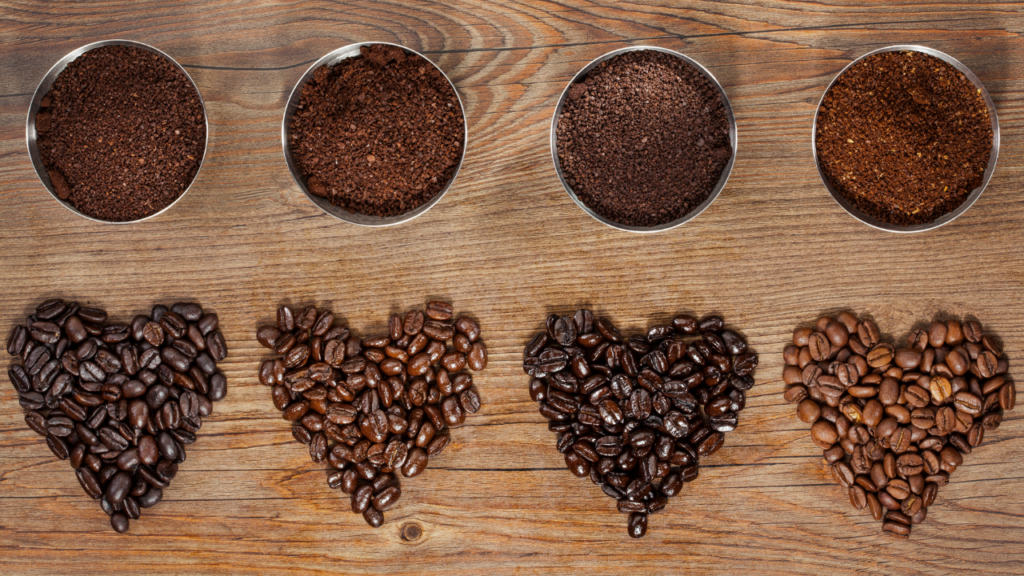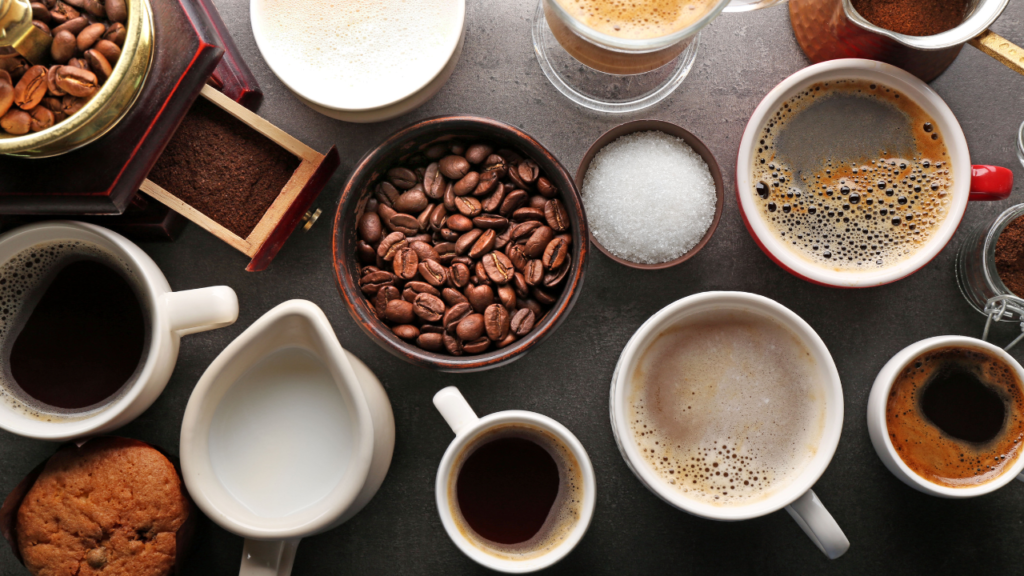
Introduction to Coffee and Calories
Do you want to know how many calories there are in a cup of coffee? Having this feeling is normal.
Millions of people worldwide drink coffee, yet few give it much thought when it comes to their calorie intake.
If you’re watching your weight, knowing how many calories are in your go-to coffee drinks can be helpful.
If you’re looking for a low-calorie drink, black coffee is your best bet.
Table of Contents
The calorie count, however, can skyrocket if you add things like cream, sugar, syrups, and other flavorings.
A cup of black coffee has less than 5 calories, whereas a large caramel latte can have as much as 400.
In this article, we’ll talk about the calories in a cup of coffee, how adding different things to coffee affects the calorie count, and how to drink coffee without exceeding your daily calorie limit.
Whether you’re an experienced coffee lover or just getting started, read on to find out more about the calories in coffee.
Understanding the Nutritional Value of Coffee
Coffee is more than just a delicious morning pick-me-up. To top it all off, it’s a surprisingly healthy beverage.
Aside from the caffeine, coffee is full of minerals and antioxidants, such as riboflavin, niacin, magnesium, and potassium.
Natural antioxidants in coffee help protect the body from free radicals, which are unstable molecules that can damage cells and play a role in the development of diseases like diabetes, heart disease, and cancer.
Coffee has been found to be one of the most antioxidant-rich foods in the Western diet.
If you’re limiting your calorie consumption, black coffee is a fantastic option because it has few calories.

A higher calorie count might be expected if flavorings like sugar and cream are added.
These days, you can flavor your coffee however you like with a variety of low-calorie and sugar-free options like almond milk and stevia.
Coffee is more than simply a tasty and stimulating drink; it’s also rich in useful minerals and antioxidants.
Next time you sit down with a cup of coffee, remember that there may be some positive effects on your health in addition to the delicious flavor.
How Many Calories are in a Cup of Black Coffee

You’re in luck if you prefer your coffee black. Depending on the serving size, a cup of black coffee has only about 2–5 calories. Take this as an illustration:
- An 8-ounce cup of black coffee has 2 calories in it.
- 12-ounce around 3-4 calories in a serving.
But if you’re having a bigger cup of coffee, like:
- 16- or 20-ounce serving could have 5 calories or a little more.
The number of calories in black coffee can vary widely depending on a number of variables, including the coffee bean used, how it was brewed, and how much of it was consumed.
Contrarily, black coffee has almost no calories and is completely acceptable.
Spices like cinnamon, nutmeg, or vanilla essence can be added to black coffee for flavor without contributing any extra calories. Use these spices to flavor your coffee without increasing the calorie count.
If you like your coffee black, you don’t have to worry about how many calories it has.
Coffee is a low-calorie beverage that can be a part of a healthy diet, so sip away with confidence.
How Many Calories are in a Cup of Coffee with Milk?

Adding milk to your coffee will increase the number of calories you consume.
How many calories are in your coffee with milk depends on the type of milk, how much milk you use, and the size of your cup.
Here are a few illustrations:
- An 8 ounces cup of coffee with 1 ounce of whole milk has 18 calories
- A 12-ounce cup of coffee with 1 ounce of whole milk has 27 calories.
- A 16-ounce cup of coffee with 2 ounces of whole milk has 70-100 calories.
- A 20-ounce cup of coffee with 2 ounces of whole milk has 85-120 calories
To help you decide which low-fat or non-dairy milk replacement might be best for your coffee,
Here are some suggestions.
- Skim milk: is an excellent low-fat food choice because it has only about 10 calories per ounce. The consistency of skim milk is quite similar to that of full milk, making it a popular choice among people who are trying to cut back on their caloric consumption.
- Almond milk: This dairy-free milk replacement is made by blending crushed almonds with water. There are just about 30–40 calories in a cup, making it a healthy option for dieters watching their calorie intake.
- Soy milk: Soy milk is another well-liked non-dairy option because it is high in protein and low in calories. It has a smooth, creamy consistency that complements coffee wonderfully, and it only has 80 to 90 calories per cup.
- Coconut milk: although having more calories than some non-dairy alternatives, coconut milk has a rich and creamy texture that works wonderfully in coffee. Around 45-55 calories can be found in 1 cup of coconut milk.
- Oat milk: Oat milk is a tasty and nutritious dairy-free alternative. It’s an excellent addition to coffee since its creamy texture and low-calorie count make it a popular choice.
It’s important to remember that the calorie content of these milk substitutes may vary slightly from brand to brand and flavor to flavor.
Some flavors have added sweeteners, which can also make the number of calories go up.
If you’re looking for an alternative to milk in your coffee, be careful to read the label.
How Many Calories are in a Cup of Coffee with Sugar?
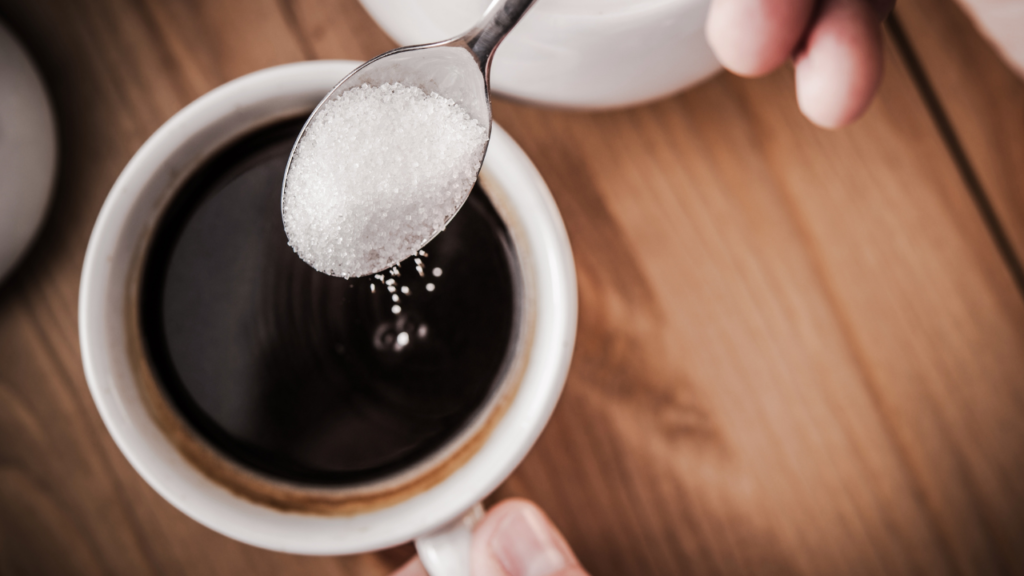
You might be surprised to learn how many extra calories a day of drinking sugary coffee might contribute to your diet.
There are often fewer than five calories in a whole cup of coffee. When sugar is added, the number of calories could quickly go up.
How many calories are in a cup of coffee with sugar depends a lot on the type and amount of sugar used.
To sweeten one’s coffee, one can add one, two, or three tablespoons of sugar.
The number of calories in your coffee, however, is directly proportional to how much sugar you put in it.
For reference, the following shows how many calories are in various amounts of sugar.
- 1 teaspoon of sugar: 16-17 calories
- 2 teaspoons of sugar: 32-34 calories
- 3 teaspoons of sugar: 48-51 calories
- 4 teaspoons of sugar: 64-68 calories
- 5 teaspoons of sugar: 80-85 calories
The more sugar you put in your coffee, the more calories it will have.
Limiting the quantity of sugar you put in your coffee or switching to a sugar-free option is a good idea if you’re watching your calorie consumption.
How Many Calories are in a Cup of Espresso?

Espresso coffee is widely consumed because of its robust taste and high caffeine content.
Espresso still has calories, despite its modest size. Many variables affect how many calories are in an espresso drink.
To begin, it’s worth noting that espresso is often given in extremely modest amounts, anything from 1 to 2 ounces.
As a result of this, a cup of espresso has relatively few calories. One shot of espresso has only one calorie.
It’s true that espresso itself has few calories, but adding milk or sugar can significantly raise that number.
To give you an idea, there are around 13 calories in a shot of espresso made with 1 ounce of whole milk and about 10 calories in a shot made with 1 ounce of 2% milk.
Keep in mind that the calorie count of flavor-infused espresso beverages served at some cafes can skyrocket.
A small, flavorful latte, which typically consists of espresso, milk, and syrup, can have as much as 150 calories.
Here are some more examples of how many calories are in espresso with different kinds of milk:
- A shot of espresso with 1 ounce of skim milk contains around 7 calories.
- A shot of espresso with 1 ounce of almond milk contains around 6 calories.
- A shot of espresso with 1 ounce of coconut milk contains around 18 calories.
- A shot of espresso with 1 ounce of half-and-half contains around 20 calories.
Keep in mind that the number of calories in espresso might change depending on how it’s made and what kind of coffee beans are used.
All these proportions are based on one typical espresso shot with various amounts of milk.
How Many Calories are in a Latte or Cappuccino?
Popular espresso-based beverages include lattes and cappuccinos, both of which can be made at home or in a cafe.
Because they usually contain milk, they have more calories than black coffee or espresso due to the added milk.
It’s difficult to give a precise calorie count for a latte or cappuccino because the number of calories might change depending on the type and quantity of milk used, as well as any added sweeteners or flavors.
With whole milk, a 12-ounce (350 ml) latte or cappuccino provides about 170 calories, whereas using skim milk yields about 100 calories for the same serving size.
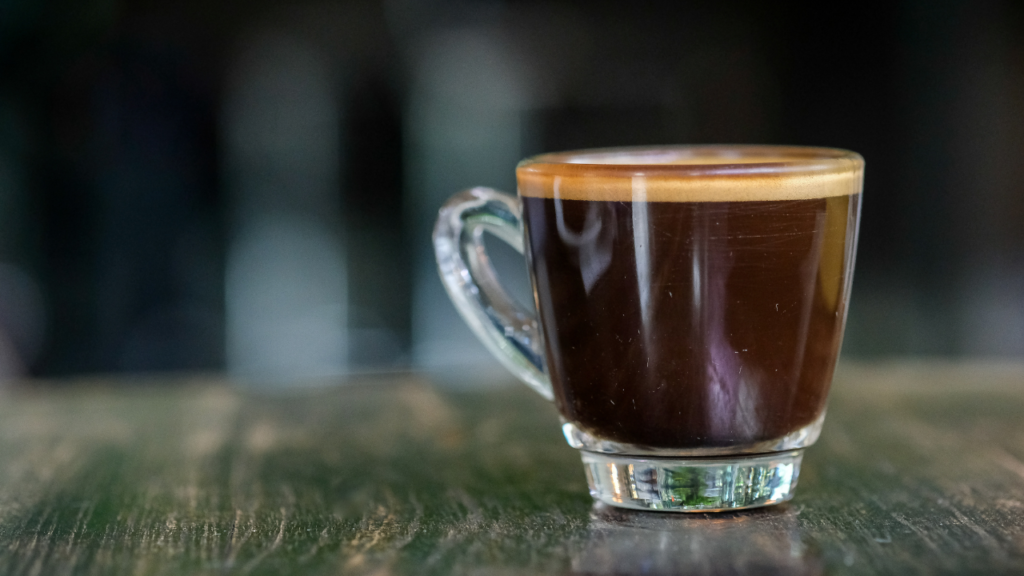
Here are a few more examples:
- A 16-ounce (470 ml) Starbucks Caffe Latte made with 2% milk has around 190 calories.
- A 12-ounce (350 ml) Dunkin’ Donuts Cappuccino made with skim milk has around 80 calories.
- A 16-ounce (470 ml) flavored latte made with whole milk and flavor syrup can contain up to 400 calories or more.
It’s important to remember that the number of calories in a latte or cappuccino can also depend on how much you drink.
Many coffee shops offer larger sizes, such as 16 or 20 ounces (470 or 590 ml), which can significantly increase the calorie count.
By substituting low-fat milk (such as almond milk) for whole milk and forgoing flavorings and syrups, you can cut down on the number of calories in your latte or cappuccino.
You can reduce the number of calories in your latte or cappuccino by ordering a smaller size or making it yourself at home.
Factors that Affect the Calorie Count in Coffee
Coffee’s caloric value depends on several variables. You should remember the following:
- Type of Coffee: The number of calories in coffee varies depending on the variety you drink. The number of calories in a cup of plain brewed coffee is extremely low, but the number can rise dramatically when milk and sugar are added.
- Serving Size: The number of calories in your coffee may also depend on how much you drink. Fewer calories can be found in a smaller or medium-sized cup as opposed to a larger one.
- Additives: The calorie count of your coffee might skyrocket if you add sweeteners like cream, sugar, flavored syrups, or whipped toppings. Calories can quickly mount up in a beverage, even if you use flavored creamer.
- Brewing Method: The calorie content of coffee can also be affected by the brewing method used. If you brew your coffee in a French press, for instance, the end result may be stronger than if you brewed it in a standard coffee maker.
- Roasting Method: The number of calories in coffee might also vary depending on how it was roasted. Deeper roasts offer more calories than lighter roasts, but they also have a richer, fuller flavor.
You should think about these things when calculating how many calories are in your coffee.
Coffee is best consumed black or with low-calorie additions like almond milk and stevia if you’re watching your weight.
If you are careful about what you put in your coffee, you can avoid taking in too many calories while still enjoying a tasty beverage.
How to Reduce Calorie Intake in Your Coffee

A few basic tips might help coffee lovers cut calories.
- Switching from full milk or cream to almond, soy, or skim milk is the first step. This reduces coffee calories dramatically.
- Use honey, stevia, or agave nectar instead of sugar to cut coffee calories. Healthier and lower-calorie sweeteners.
- Add a little cinnamon to your coffee to cut calories. Cinnamon can sweeten coffee without adding sugar.
- If you like flavored coffee, use sugar-free syrups or flavorings instead of high-calorie ones.
Finally, to cut calories, consume black coffee or espresso. Espresso and black coffee have very few calories.
By making small changes to how you make and drink coffee, you can cut your calorie intake by a lot while still enjoying your favorite drink.
SEE ALSO:
Conclusion and Final Thoughts on Coffee and Calories
Millions of people worldwide love coffee. It has few calories when you drink it black, but the calories go up when you add cream, sugar, syrups, or whipped cream.
These additives can add hundreds of calories, causing weight gain and health issues.
This article looked at how many calories are in different coffee drinks, how adding things to coffee affects the calorie count, and how to enjoy coffee without going over your daily calorie limit.
It’s crucial to watch what goes into your coffee and how much.
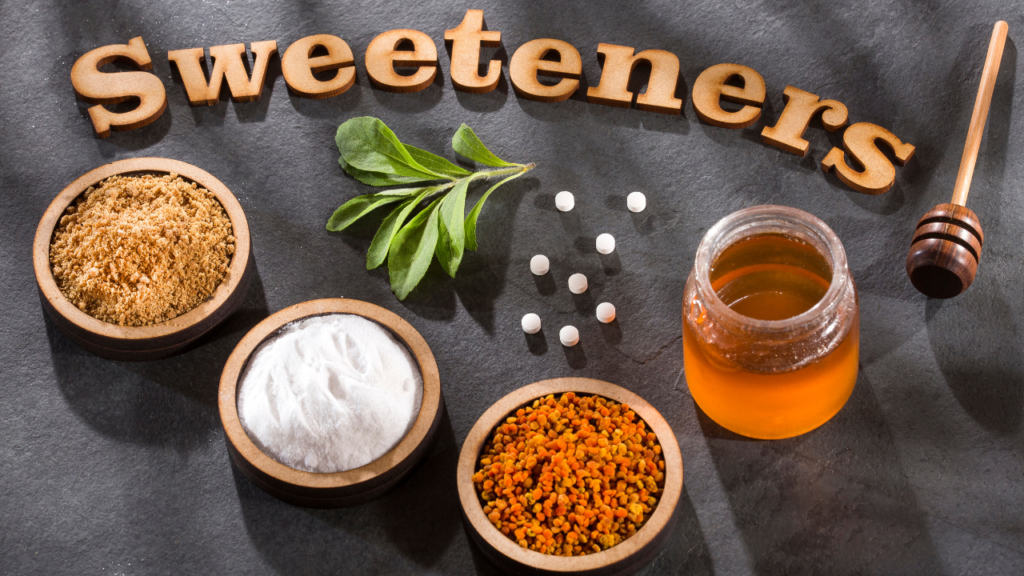
Coffee has many health benefits, including antioxidants and key nutrients, but it’s not a miracle diet fix.
If you drink coffee in moderation and add low-calorie things to it, it can be part of a healthy diet.
In conclusion, by watching what you put in your coffee and how much you drink, you may enjoy your favorite drink without compromising your health goals.
Moderate coffee consumption with a balanced diet can be healthful.

